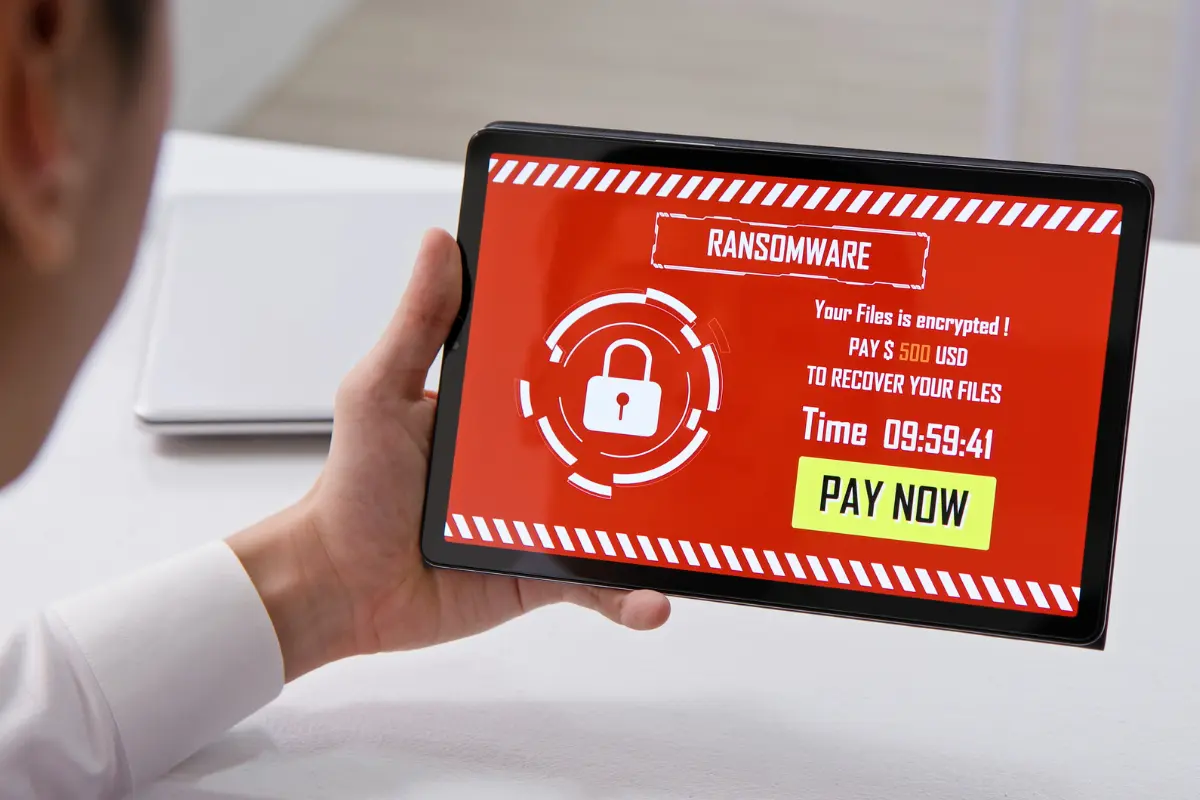Small enterprises to Medium Enterprises (DLP) Strategies
No. | Section | Description |
|---|---|---|
1 | Understanding the Importance of DLP for small enterprises | Overview of why DLP is critical for SMEs, with statistics on the cost of data breaches and the importance of protecting data. |
2 | Implementing Data Classification and Encryption | Step-by-step guide to classifying data based on sensitivity and implementing encryption to protect data at rest and in transit. |
3 | Establishing Access Controls and Monitoring | Strategies for implementing role-based access controls and monitoring data access to prevent unauthorized usage. |
4 | Developing a Strong Endpoint Security Strategy | Detailed steps for securing endpoints such as laptops and smartphones, including the use of antivirus software and device encryption. |
5 | Creating a Data Loss Response Plan | Instructions for developing a Data Loss Response Plan to mitigate the impact of data loss and ensure quick recovery. |
6 | Regular Employee Training and Awareness | Emphasizes the importance of regular employee training to reduce the risk of human error leading to data loss. |
7 | Leveraging Cloud-Based DLP Solutions | Recommendations for selecting and implementing cloud-based DLP solutions to protect data in cloud environments. |
8 | Ensuring Compliance with Data Protection Regulations | Guidance on staying compliant with data protection regulations, including regular audits and updates to DLP strategies. |
9 | Integrating DLP with Broader Cybersecurity Strategies | Advice on how to integrate DLP into a comprehensive cybersecurity strategy for more effective data protection. |
10 | Evaluating and Updating DLP Strategies Regularly | Importance of regular reviews and updates to DLP strategies to stay ahead of emerging threats and regulatory changes. |
11 | Leveraging AI and Machine Learning for Advanced DLP | Discusses the use of AI and ML to enhance DLP by identifying and preventing data breaches in real-time. |
12 | Conducting Regular Penetration Testing | |
13 | Partnering with Managed Security Service Providers (MSSPs) | Advice on working with MSSPs to manage DLP programs and provide expertise and resources that SMEs may lack. |
14 | Establishing a Data Backup and Recovery Plan | Instructions for automating backups and testing recovery procedures to minimize the impact of data loss incidents. |
15 | Staying Informed About Emerging Threats | Recommendations for staying updated on the latest cyber threats and trends to maintain effective DLP strategies. |
#Introduction
In today’s digital age, small enterprises to medium enterprises protecting sensitive data has become a top priority for businesses of all sizes.
However, small enterprises to medium enterprises (SMEs) often face unique challenges in safeguarding their data due to limited resources and expertise. Data Loss Prevention (DLP) is a critical component of any organization’s cybersecurity strategy, designed to prevent the unauthorized sharing, transfer, or loss of sensitive data.

1. Understanding the Importance of DLP for Small Enterprises To Medium Enterprises
Overview
Small Enterprises
:
Data is the lifeblood of any organization, but SMEs are particularly vulnerable to
data breaches and accidental data loss. Unlike larger corporations, SMEs may not have the same level of
resources or dedicated IT teams to manage their data security.
1.1 Practical Steps:
- 1.1.1 Assess Your Data: Begin by identifying and classifying your organization’s data.
Understand what data is most critical to your operations and most at risk. - 1.1.2 Prioritize Risks: Determine which data is most vulnerable and prioritize your DLP
efforts around protecting these assets.
2. Implementing Data small enterprises Classification and Encryption
Overview:
Data classification is the process of categorizing data based on its level of
sensitivity and importance. This is a foundational step in any DLP strategy, as it helps SMEs identify what
data needs the most protection.
2.1 Practical Steps:
- 2.1.1 Classify Your Data: Use data classification tools to categorize data into
different levels of sensitivity, such as public, internal, confidential, and highly confidential. - 2.1.2 Apply Encryption:Implement encryption protocols for all classified data, particularly when it’s stored on devices or transmitted across networks. Use AES-256 encryption
standards for data at rest and TLS 1.2 or higher for data in transit.
3. Establishing Access Controls and Monitoring
Overview:
One of the most effective ways to prevent data loss is by controlling who has
access to your data and how it is used. Access controls help ensure that only authorized personnel can view
or manipulate sensitive data.
3.1 Practical Steps:
- 3.1.1 Role-Based Access Control (RBAC): Implement RBAC to ensure that employees only
have access to the data they need to perform their jobs. Regularly review and update access permissions
to reflect changes in roles or employment status. - 3.1.2 Activity Monitoring: Use DLP tools to monitor data access and usage. Set up
alerts for any suspicious activities, such as large data transfers, access to restricted files, or
unauthorized device connections.
4. Developing a Strong Endpoint Security Strategy
Overview
Small enterprises
:
Endpoints, such as laptops, smartphones, and tablets, are often the weakest link
in data security. As remote work becomes more prevalent, securing these endpoints has become more
challenging yet more critical.
4.1 Practical Steps:
- 4.1.1 Deploy Endpoint Protection: Implement endpoint protection software that includes
antivirus, anti-malware, and firewall capabilities. Ensure that all devices connecting to your network
are covered by these protections. - 4.1.2 Device Encryption: Ensure that all endpoints used for work purposes are
encrypted, especially if they store sensitive data or connect to the company’s network.

5. Creating a Data Loss Response Plan
Overview Small enterprises :
Despite the best preventative measures, data loss incidents can still occur.
Having a well-defined response plan in place is crucial for minimizing damage and recovering quickly. A Data
Loss Response Plan (DLRP) outlines the steps to be taken in the event of data loss, including
identification, containment, eradication, recovery, and communication.
5.1 Practical Steps:
- 5.1.1 Draft the Plan: Develop a detailed DLRP small enterprises that includes roles and responsibilities,
communication protocols, and a step-by-step response process. - 5.1.2 Regular Drills:
Conduct regular simulations and drills to ensure that all
employees understand their roles in the event of data loss and that the plan is effective.
6. Regular Employee Training and Awareness
Overview: Human error is a leading cause of data loss, often through accidental data
sharing, phishing attacks, or weak password practices. Regular training and awareness programs are essential
to educate employees about the importance of data security and their role in protecting it.
6.1 Practical Steps:
- 6.1.1 Security Awareness Training: Implement ongoing security awareness programs that
educate employees on recognizing phishing attempts, using strong passwords, and following data handling
best practices. - 6.1.2 Phishing Simulations:Conduct regular phishing simulations to test and reinforce employees’ ability to identify and respond to phishing threats.
7. Leveraging Cloud-Based DLP Solutions
Overview
enterprises
:
As more SMEs move their operations to the cloud, it’s essential to implement
cloud-based DLP small enterprises solutions that can protect data in these environments. Cloud DLP tools offer the flexibility
and scalability needed to secure data across various cloud services, while also providing centralized
management and monitoring.
7.1 Practical Steps:
- 7.1.1 Choose the Right Cloud DLP Solution: Select a cloud DLP solution that integrates
with your existing cloud services and offers robust data protection features, such as data
classification, encryption, and access controls. - 7.1.2 Monitor Cloud small enterprises Activities: Use your cloud DLP solution to monitor data transfers,
access, and sharing within your cloud environment. Set up alerts for any activities that may indicate a
data loss risk.
8. Ensuring Compliance with Data Protection Regulations
Overview: Compliance with data protection regulations, such as GDPR, CCPA, and others, is
not only a legal requirement but also a critical aspect of protecting your organization’s reputation.
Non-compliance can result in severe financial penalties, legal action, and loss of customer trust.
8.1 Practical Steps:
- 8.1.1 Understand Applicable Regulations: Identify the data protection regulations that
apply to your organization based on your location, industry, and customer base. - 8.1.2 Regular Audits: Conduct regular compliance audits to ensure that your data
protection practices align with regulatory requirements. Update your DLP strategies as necessary to
maintain compliance.
9. Integrating DLP with Broader Cybersecurity Strategies
Overview
Enterprises
:
DLP should not be viewed in isolation but as part of a broader cybersecurity
strategy. Integrating DLP with other security measures, such as network security, threat intelligence, and
incident response, provides a more comprehensive defense against data loss.
9.1 Practical Steps:
- 9.1.1 Unified Security Approach: Integrate DLP with your overall cybersecurity strategy
to ensure that all aspects of data protection are covered. - 9.1.2 Threat Intelligence: Incorporate threat intelligence into your DLP efforts to
stay informed about the latest risks and vulnerabilities that could lead to data loss.
10. Evaluating and Updating DLP Strategies Regularly
Overview
Small company
:
Cyber threats and regulatory requirements are constantly evolving, making it
essential to regularly evaluate and update your DLP strategies. Continuous improvement ensures that your
organization’s data protection measures remain effective and up-to-date.
10.1 Practical Steps:
- 10.1.1 Periodic Reviews: Schedule regular reviews of your DLP strategies to identify
areas for improvement and adjust to new threats or regulatory changes. - 10.1.2 Employee Feedback: Gather feedback from employees to understand the
effectiveness of your DLP small enterprises measures and identify any challenges they may face in adhering to them.
11. Leveraging AI and Machine Learning for Advanced DLP
Overview machine learning
enterprises
:
As data breaches become more sophisticated, traditional DLP measures might not be
sufficient to protect sensitive data. AI and Machine Learning (ML) are becoming critical tools in
identifying and preventing data loss in real-time. These technologies can analyze vast amounts of data,
identify patterns, and detect anomalies that might indicate a security breach or an attempt to exfiltrate
sensitive information.
11.1 Practical Steps:
- 11.1.1 Implement AI-Driven DLP Tools: Choose DLP solutions that incorporate AI and ML
to enhance detection capabilities. These tools can learn from past incidents to predict and prevent
future breaches. - 11.1.2 Continuous Learning: Ensure that your AI and ML models are continuously trained
with new data to adapt to emerging threats and changing data environments.
12. Conducting Regular Penetration Testing
Overview :
Penetration testing, or ethical hacking, is a proactive approach to identifying
vulnerabilities in your DLP small enterprises strategies and overall security posture. By simulating attacks on your systems,
you can uncover weaknesses before malicious actors exploit them.
12.1 Practical Steps:
- 12.1.1 Engage Professional Penetration small enterprises Testers: Hire certified professionals to conduct
thorough penetration tests on your network, endpoints, and cloud environments. - 12.1.2 Simulate DLP Breaches: Include scenarios in your penetration testing that
specifically target your DLP small enterprises measures, such as attempts to exfiltrate data through compromised
endpoints.
13. Partnering with Managed Security Service Providers (MSSPs)
Overview managed security enterprises
:
Many SMEs lack the resources to manage comprehensive DLP programs internally.
Partnering with a Managed Security Service Provider (MSSP) can provide access to advanced DLP small enterprises solutions and
expertise without the need for significant in-house investment.
13.1 Practical Steps:
- 13.1.1 Evaluate MSSPs: When selecting an MSSP, evaluate their experience, expertise in
DLP, and the range of services they offer, including monitoring, incident response, and compliance
support. - 13.1.2 Customized Solutions: Work with your MSSP to tailor DLP strategies to your
specific business needs, ensuring that the solutions provided align with your risk profile and
regulatory requirements.
14. Establishing a Data Backup and Recovery Plan
Overview
Enterprises recovery plan
:
Despite all preventative measures, data loss can still occur due to factors such
as hardware failures, accidental deletions, or cyberattacks like ransomware. A robust data backup and
recovery plan ensures that your business can quickly recover lost data and minimize downtime.
14.1 Practical Steps:
- 14.1.1 Automate Backups: Implement automated backup solutions that regularly back up
critical data to secure, off-site locations or cloud storage. - 14.1.2 Test Recovery Procedures: Regularly test your data recovery procedures to ensure
that backups can be restored quickly and effectively in the event of data loss.

